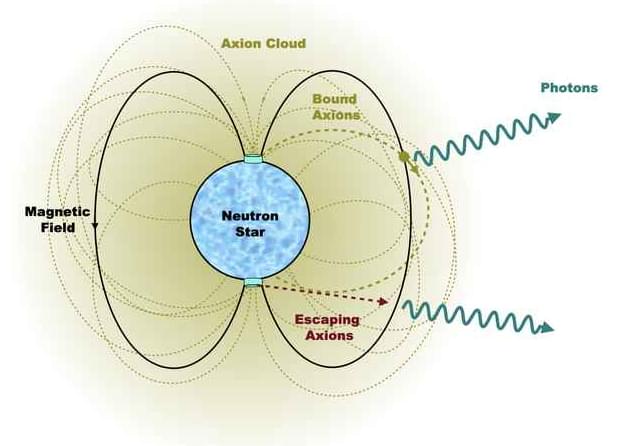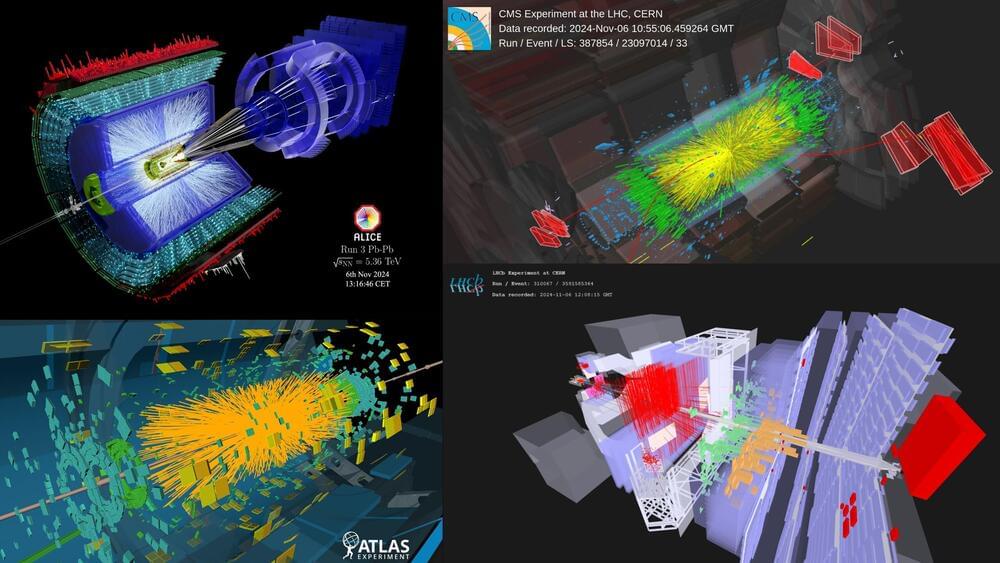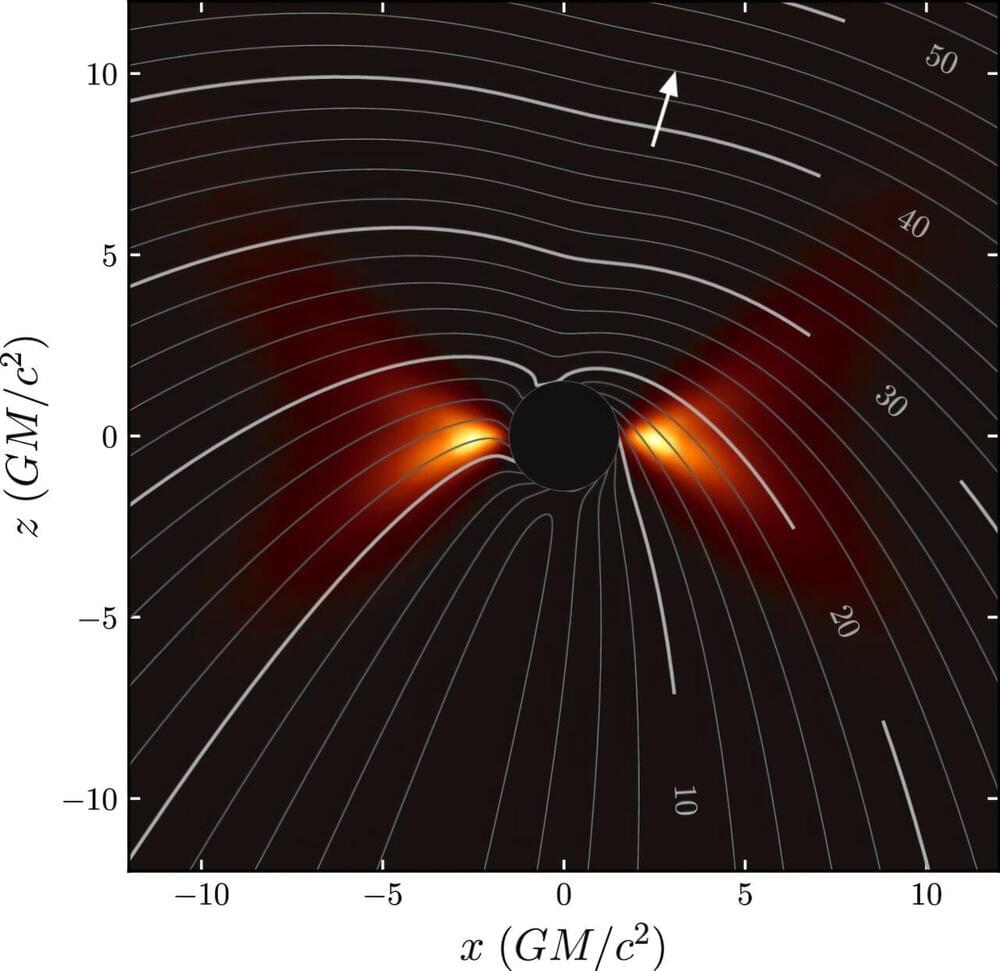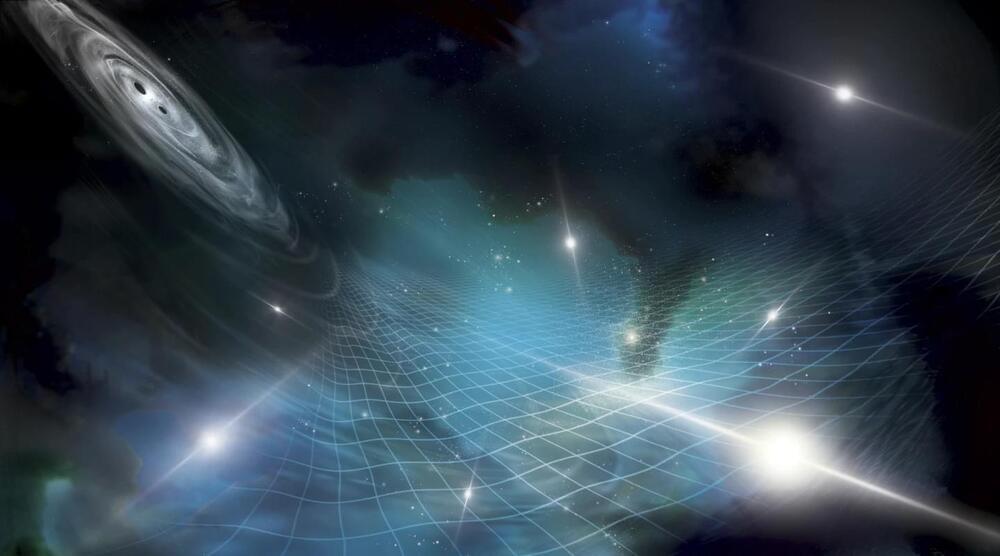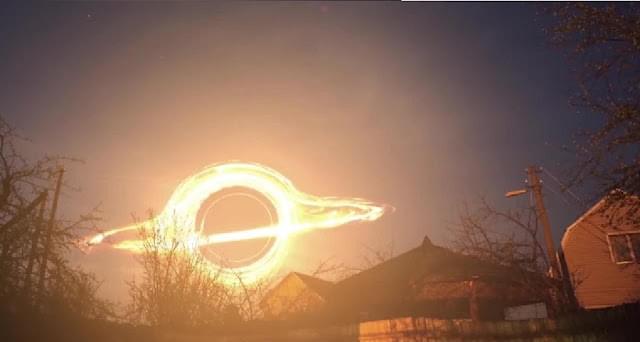Physicists show that neutron stars may be shrouded in clouds of ‘axions’ — and that these clouds can teach us a lot. A team of physicists from the universities of Amsterdam, Princeton and Oxford have shown that extremely light particles known as axions may occur in large clouds around neutron stars. These axions could form an explanation for the elusive dark matter that cosmologists search for — and moreover, they might not be too difficult to observe.
Category: cosmology – Page 58
Massive stars about eight times more massive than the sun explode as supernovae at the end of their lives. The explosions, which leave behind a black hole or a neutron star, are so energetic they can outshine their host galaxies for months. However, astronomers appear to have spotted a massive star that skipped the explosion and turned directly into a black hole.
The Large Hadron Collider (LHC) is like an immensely powerful kitchen, designed to cook up some of the rarest and hottest recipes in the universe, like the quark–gluon plasma, a state of matter known to have existed shortly after the Big Bang. While the LHC mostly collides protons, once a year it collides heavy ions—such as lead nuclei—a key ingredient for preparing this primordial soup.
A new statistical analysis by researchers at the University of Arizona suggests that color vision evolved in animals around 500 million years ago, long before the evolution of colorful fruits and flowers, which started sprouting 200 to 350 million years ago. The researchers focused on what they term “conspicuous colors”—basically, the ones kids are likeliest to select in a 16 pack of Crayolas—red, orange, yellow, blue and purple.
Around 150 million years ago, presumably to capitalize on the well-established prevalence of color vision, species began evolving warning coloration. And 50 million years later, there was an evolutionary explosion of both warning and sexual coloration. Although the reasons behind this evolutionary burst are still unclear, the researchers identified three warning signal animal vectors behind it: ray-finned fishes, birds and lizards.
Additionally, warning coloration is much more widespread among species than sexual coloration, likely because colorful animals do not themselves need to have color vision to signal the danger they pose to other, color-sensitive species. Sexual color signals, on the other hand, are confined to vertebrate and arthropod species that have well-developed color vision.
Primordial black holes may be exploding throughout the universe. If we can catch them in the act, it could pave the way to new physics, a study suggests.
Scientists recently reported a monumental discovery in astrophysics: the detection of low-frequency gravitational waves. This breakthrough was made by NANOGrav (North American Nanohertz Observatory for Gravitational Waves), which released findings in The Astrophysical Journal Letters. These waves, predicted by Einstein, are generated when massive objects like supermassive black holes interact, creating cosmic ripples across spacetime. For the first time, researchers have managed to “hear” these background vibrations of the universe, likened to the faint, low hum in a cosmic orchestra. This detection not only broadens our understanding of gravitational waves but also opens up a new chapter in studying the universe’s largest objects and events.
How did everything begin? It’s a question that humans have pondered for thousands of years. Over the last century or so, science has homed in on an answer: the Big Bang.
This describes how the Universe was born in a cataclysmic explosion almost 14 billion years ago. In a tiny fraction of a second, the observable universe grew by the equivalent of a bacterium expanding to the size of the Milky Way. The early universe was extraordinarily hot and extremely dense. But how do we know this happened?
Let’s look first at the evidence. In 1929, the American astronomer Edwin Hubble discovered that distant galaxies are moving away from each other, leading to the realisation that the universe is expanding.
There is a massive black hole with millions of times more mass than our sun is plunging towards Earth and will one day annihilate life as we know it. This particular black hole is coming towards us at 110 kilometres per second and is at the center of the Great Andromeda Galaxy – the Milky Way’s closest and much larger neighbor.
At the center of the most known galaxies, there exist a supermassive black hole which stars spin around and helps keep everything in formation. But such is the powerful gravitational pull of the Milky Way and Andromeda that they are being drawn toward each other and will one day crash.
Did the laws of physics come into being at the Big Bang?
Watch the full talk at https://iai.tv/video/the-laws-of-physics-are-not-fixed-joao-…escription.
We think that the laws of physics are unchanging and cannot be violated. Join pioneering physicist, João Magueijo, as he argues that everything we thought we knew about the laws of physics is wrong. They do change. And they can be violated. What’s more, a new understanding of these laws could help solve the mystery of dark matter.
#physics #science #speedoflight.
João Magueijo is a Portuguese cosmologist and professor in theoretical physics at Imperial College London. He is a pioneer of the varying speed of light (VSL) theory.
The Institute of Art and Ideas features videos and articles from cutting edge thinkers discussing the ideas that are shaping the world, from metaphysics to string theory, technology to democracy, aesthetics to genetics. Subscribe today! https://iai.tv/subscribe?utm_source=YouTube&utm_medium=descr…-magueijo.
However, for the first time, two dark matter experiments have detected a neutrino fog, a dense cloud of neutrinos. This discovery is reported by researchers from XENON and PandaX — two scientific experiments that aim to detect dark matter, operating independently in Italy and China respectively.
“This is the first measurement of astrophysical neutrinos with a dark matter experiment,” Fei Gao, a scientist involved in the Xenon experiment, said.
Neutrinos are typically detected through coherent elastic neutrino-nucleus scattering (CEvNS), a process in which neutrinos interact with the entire nucleus rather than just a proton or electron.
